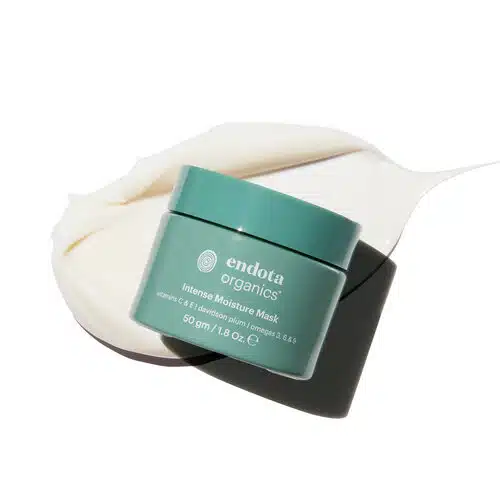The changing of seasons and weather cooling down can signal different things for all of us. It might be your cue to bring out your favourite coat, or switch from iced to hot drinks, or even time for another season of your favourite sport.
What all of us share in common, however, is the impact a drop in the thermometer can have on our skin. As we make our way through the colder months, our skin requires different forms of care to remain healthy and radiant.
By taking a closer look at the ways a cooler temperature effects our skin, we can uncover the best skincare ingredients and formulas to help combat some of those impacts – like dryness, dullness or sensitivity. That way, our skin can continue to be at its best, no matter how much of a chill is in the air.
how does cooler weather effect our skin?
A decrease in temperature often leads to lower levels of humidity, causing our skin to lose moisture more quickly. As a result, our skin can feel more dry or flaky, be more red or even itchy – since it’s more sensitive too. All of this can compromise our skin’s natural protective barrier, making it more vulnerable to environmental aggressors or existing skin conditions.
In short, our skin has to go the extra mile to protect itself from the cold as much as the rest of our body does.
how can I tell if my skin is being affected by the cold?
There are few telling signs to keep an eye out for as the weather gets cooler. These include a tight, uncomfortable feeling – which suggests that the lack of humidity has drained your skin of its natural oils. You might also notice dry, flaky patches, or redness and sensitivity which can steam from constricted blood vessels. When your skin is dehydrated, the urge to scratch at it can increase too (which can further damage your natural protective barrier).
Any one or a combination of these is more than enough of an indication that it’s time to revitalise your skin with ingredients designed to combat the cold.

how does cooler weather effect our skin?
A decrease in temperature often leads to lower levels of humidity, causing our skin to lose moisture more quickly. As a result, our skin can feel more dry or flaky, be more red or even itchy – since it’s more sensitive too. All of this can compromise our skin’s natural protective barrier, making it more vulnerable to environmental aggressors or existing skin conditions.
In short, our skin has to go the extra mile to protect itself from the cold as much as the rest of our body does.

how can I tell if my skin is being affected by the cold?
There are few telling signs to keep an eye out for as the weather gets cooler. These include a tight, uncomfortable feeling – which suggests that the lack of humidity has drained your skin of its natural oils. You might also notice dry, flaky patches, or redness and sensitivity which can steam from constricted blood vessels. When your skin is dehydrated, the urge to scratch at it can increase too (which can further damage your natural protective barrier).
Any one or a combination of these is more than enough of an indication that it’s time to revitalise your skin with ingredients designed to combat the cold.
which ingredients are most effective when the weather is cooler?
- Hyaluronic acid
Known for its exceptional hydrating properties, this ingredient retains moisture so you can maintain a plump, hydrated complexion and avoid dryness and flakiness. - Ceramides
These lipid molecules help to protect your skin’s barrier, holding in moisture as it goes. They’re ideal for avoiding dry or sensitive skin. - Antioxidants
Like vitamin C and niacinamide, which help form a shield against free radical damage that can result from colder weather and pollution. - Shea butter, aloe vera and jojoba oil
Naturally moisturising ingredients that help to lock in moisture for longer.

which formulas can help protect my skin?
As with any season, the most effective skincare formula is made up of a few different steps – all working in harmony to hydrate, nourish and protect your skin against the colder weather.
Starting with a hydrating cleanser like our Deep Cleansing Cream, Moisture Restore Cleansing Milk or Ceramide Cleansing Balm is an ideal first step for replenishing your skin after it might have dried in the cold. From there, using a serum like the Radiance Boost Serum, Peptide 8 Hyaluronic Serum or Potent Brightening Serum will enrich your skin with a range of antioxidants, as well as extra-hydrating hyaluronic acid.
For deep, winter-ready levels of moisturising, our Cellular Repair Face Cream, Deep Hydration Moisturiser and Intense Moisture Mask have all been clinically formulated to not only restore hydration levels – but also maintain that moisture while you’re out in the world. You can use these day and night to avoid dry, flaky and itchy skin.
can I use skin peels and acid-based products during colder weather?
The cooler months can also mean lower UV levels at times – which means they’re a great opportunity to use formulas that contain AHAs (Alpha Hydroxy Acids) and BHAs (Beta Hydroxy Acids). These ingredients are phototoxic and can make your skin sensitive to light, so are suited for times when UV levels aren’t as high.
They’re also powerful exfoliants that improve your skin’s texture and tone, while reducing inflammation and redness – so your skin stays clear and radiant. You’ll find them in formulas like our Rapid Enzyme Mask and AHA Renewal Cleansing Gel, which can complement your full skincare ritual. Remember, though, that SPF protection is essential all year-round, particularly after active ingredients like these!
Autumn and winter might be chilly – but with the right skincare formulas on-side, your skin can maintain a healthy, hydrated glow all year round. By taking the time to include moisture-rich, nourishing and protective ingredients into your skincare ritual, skin of all types can look and feel their best.

